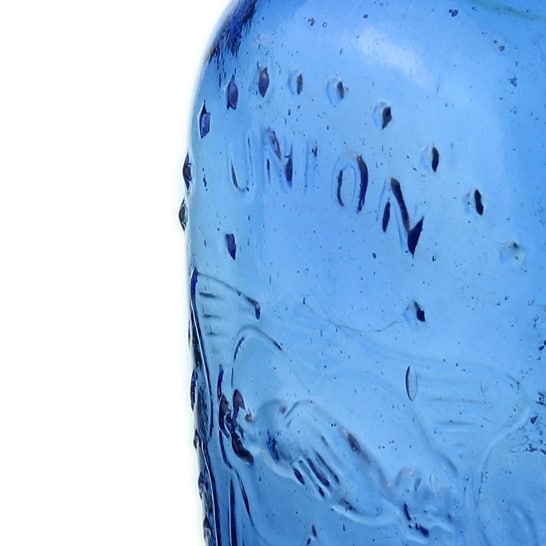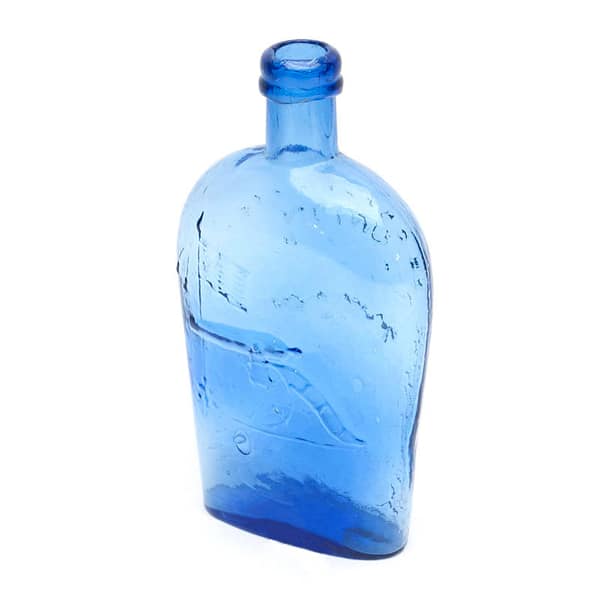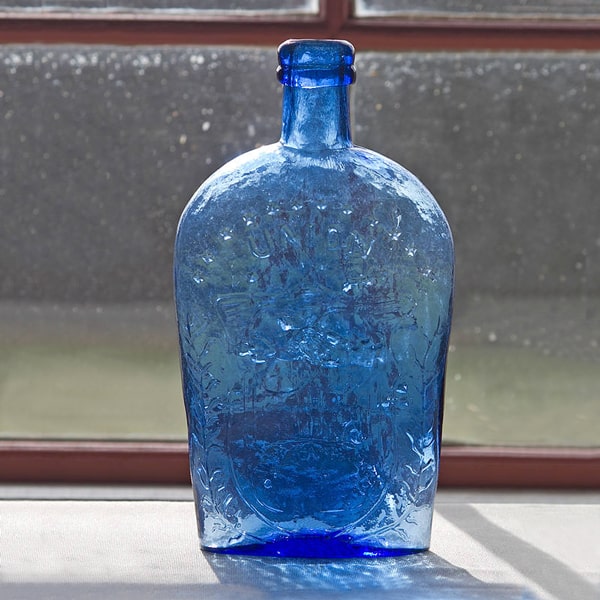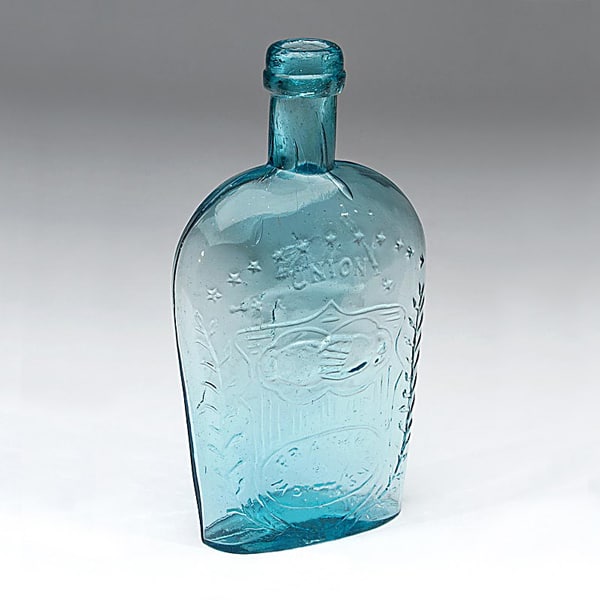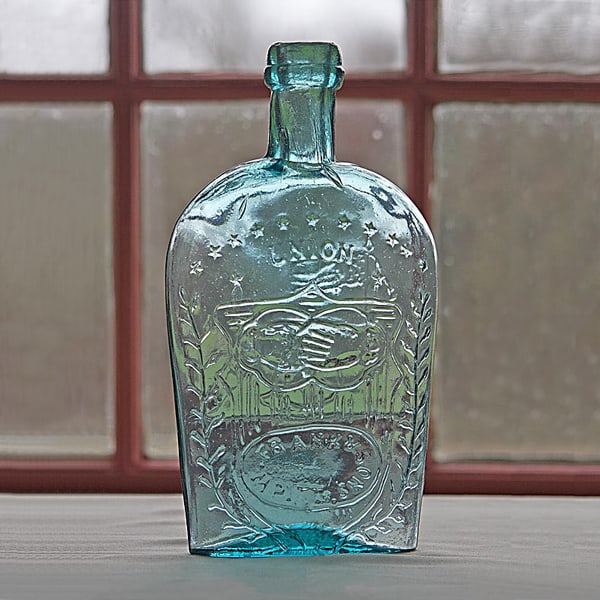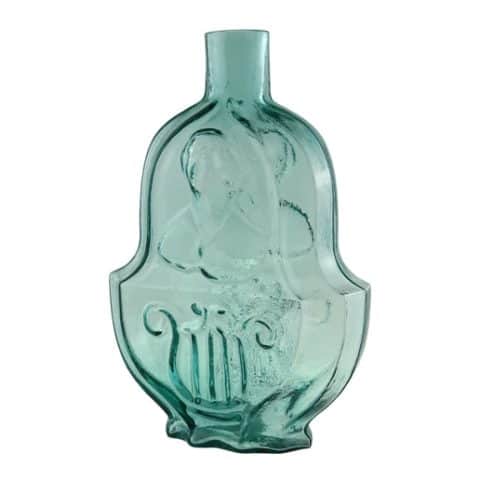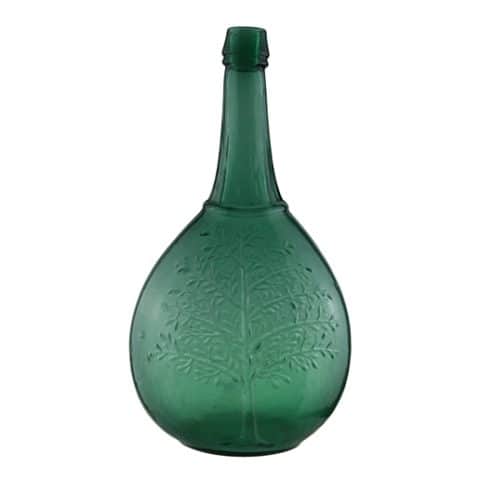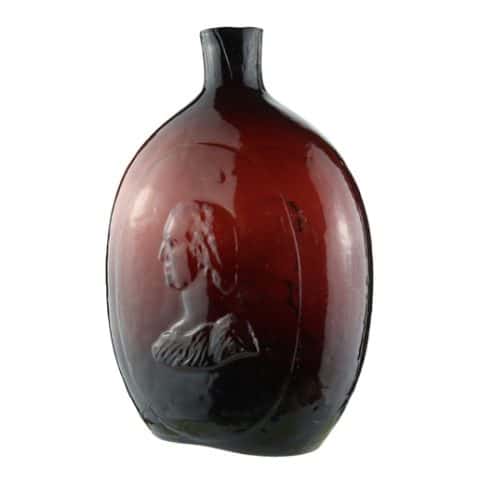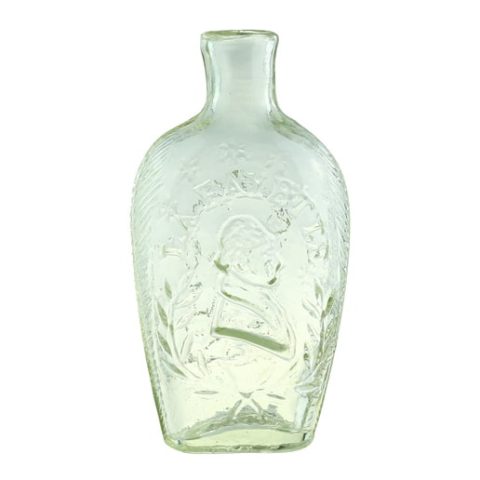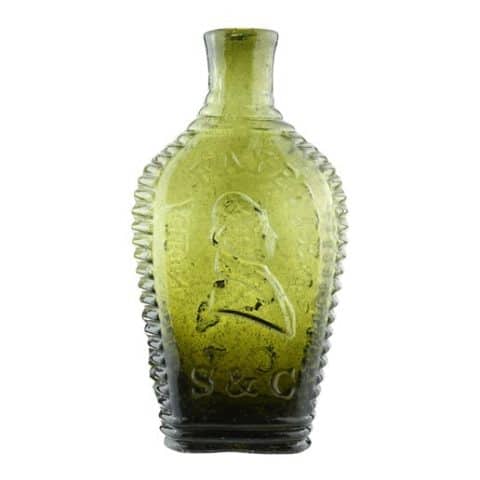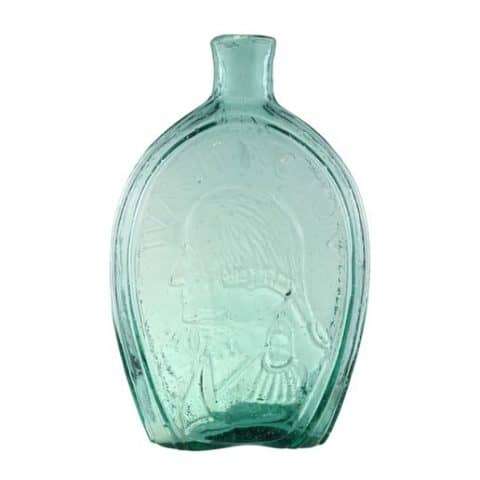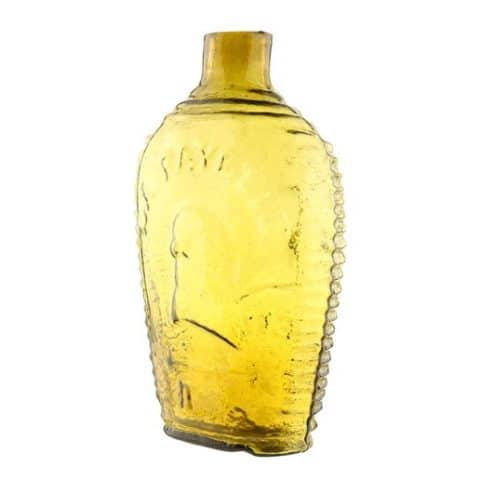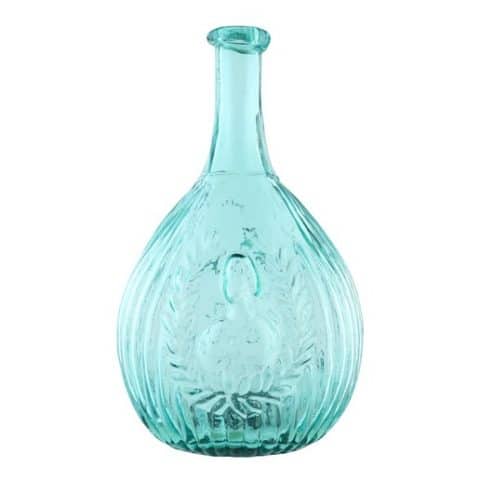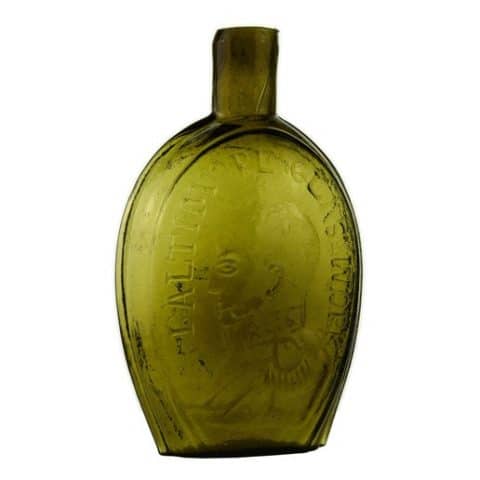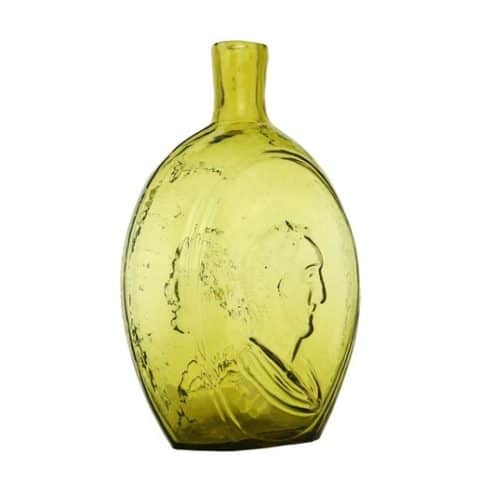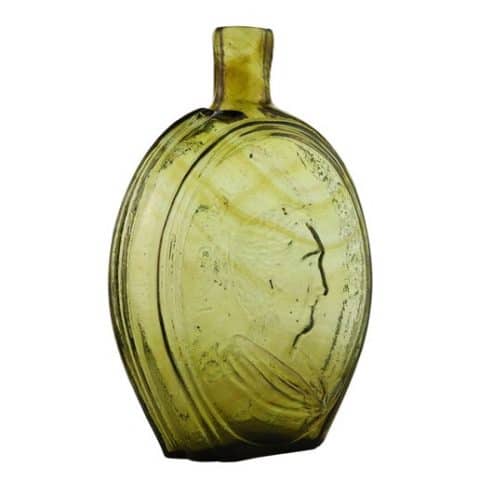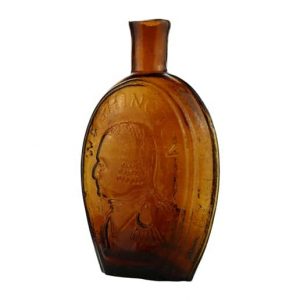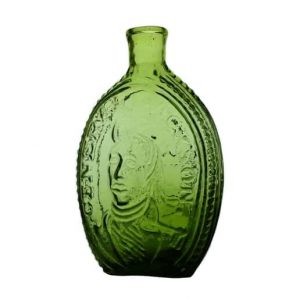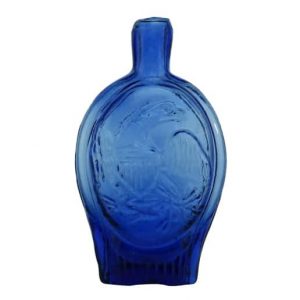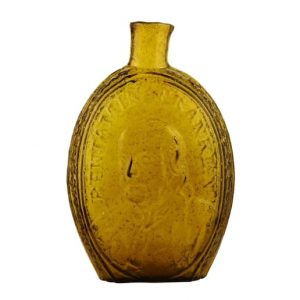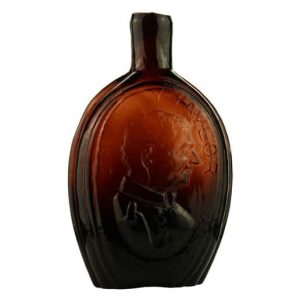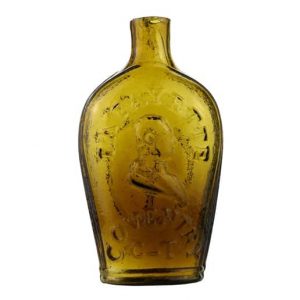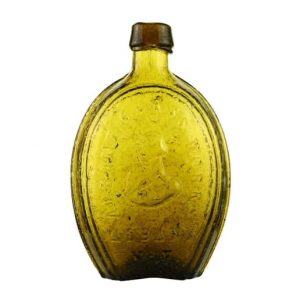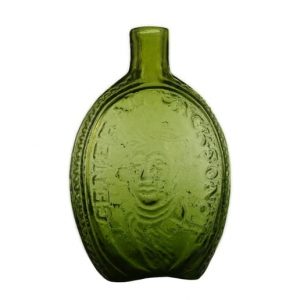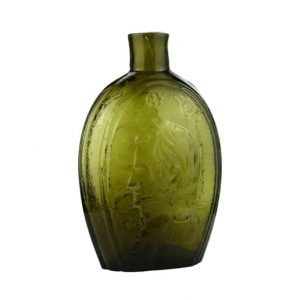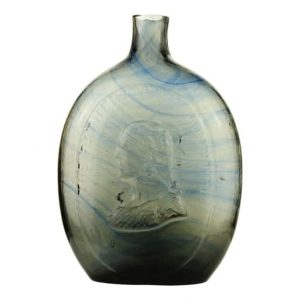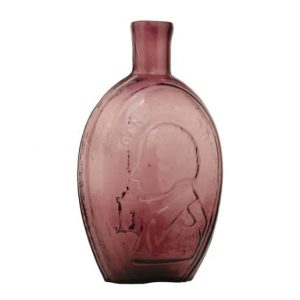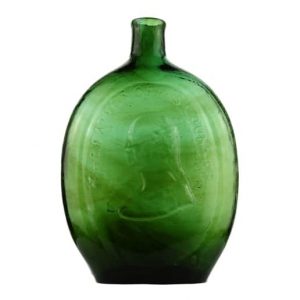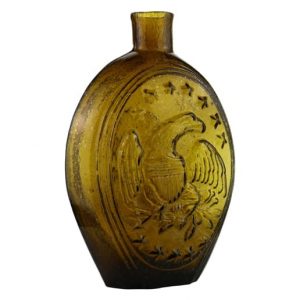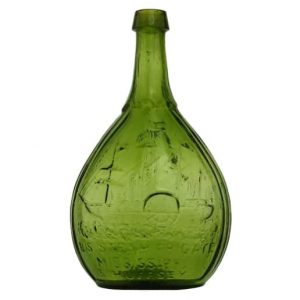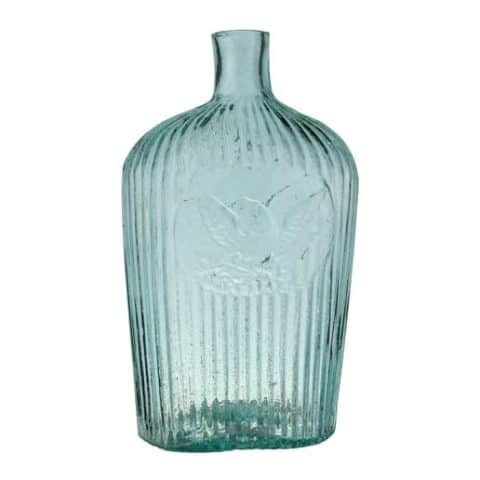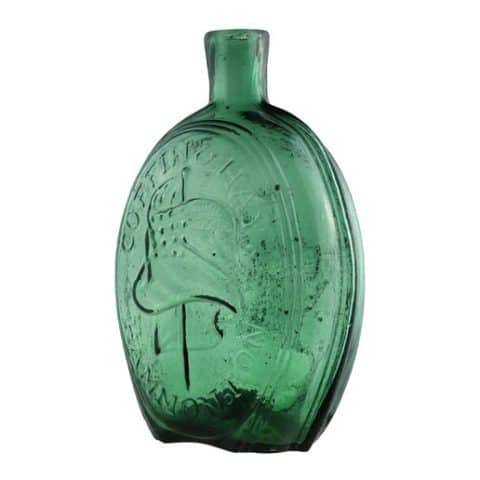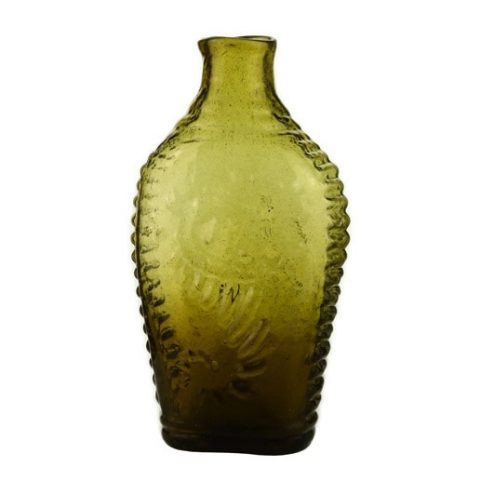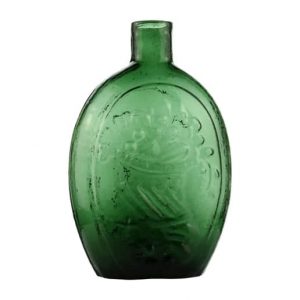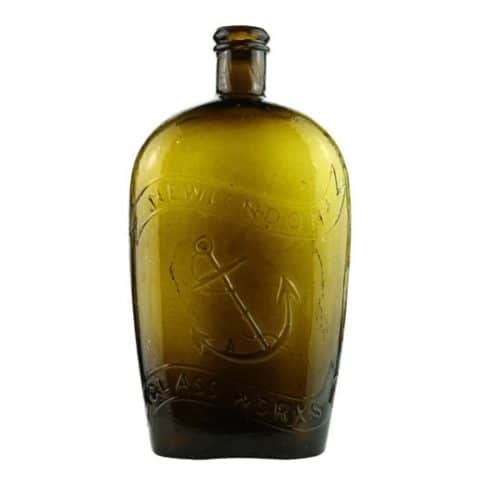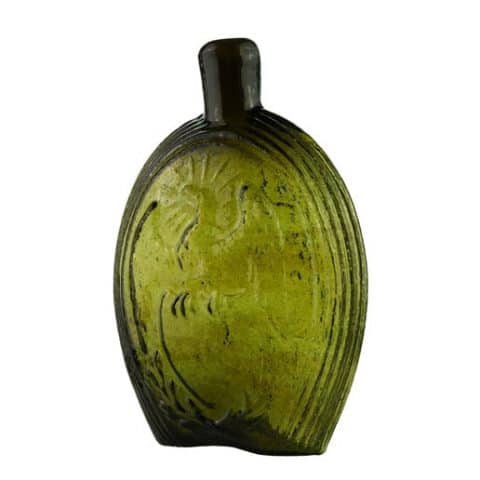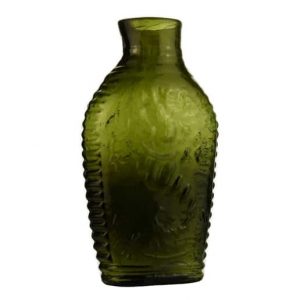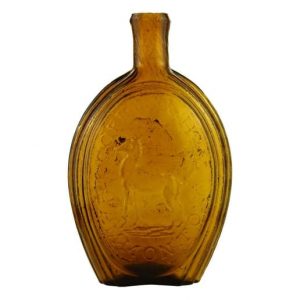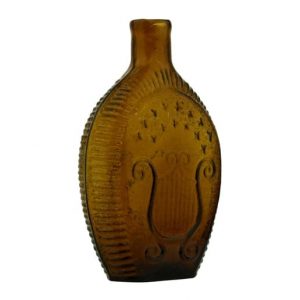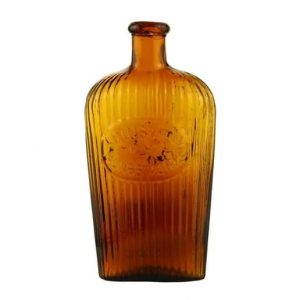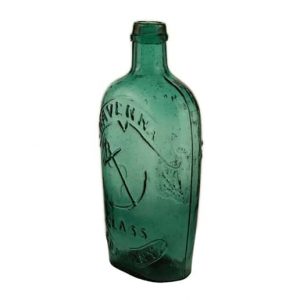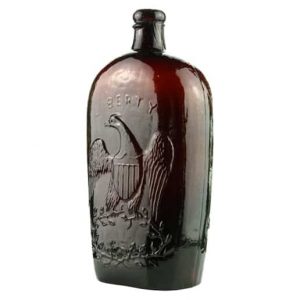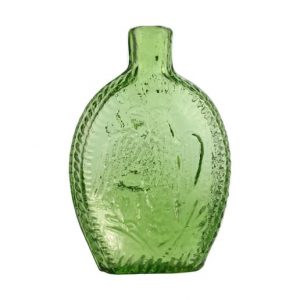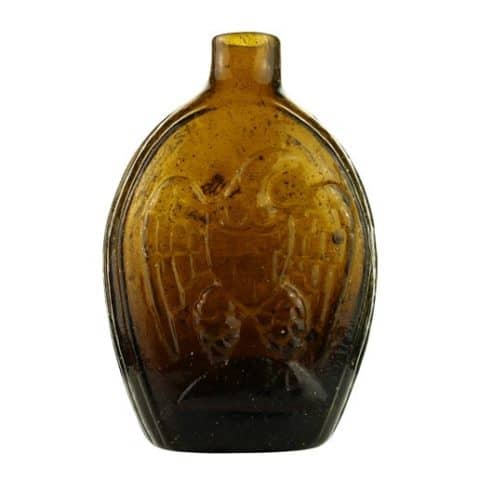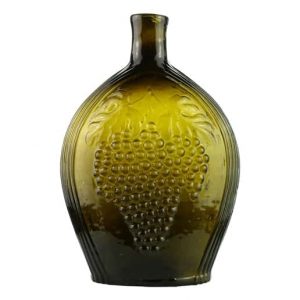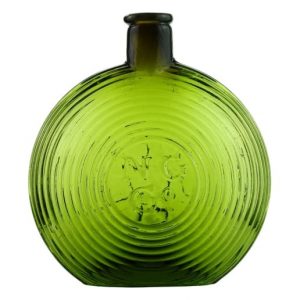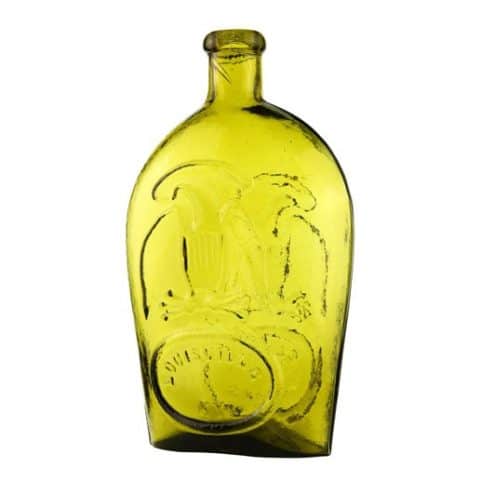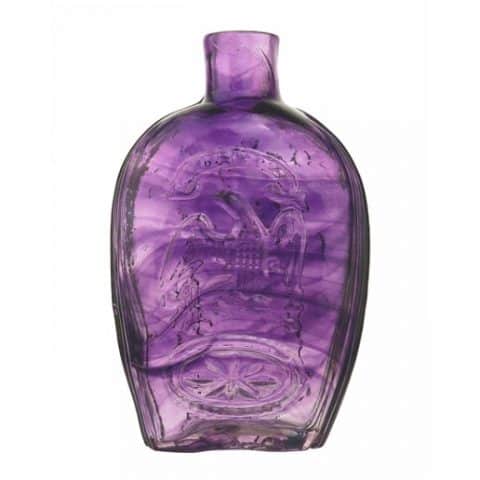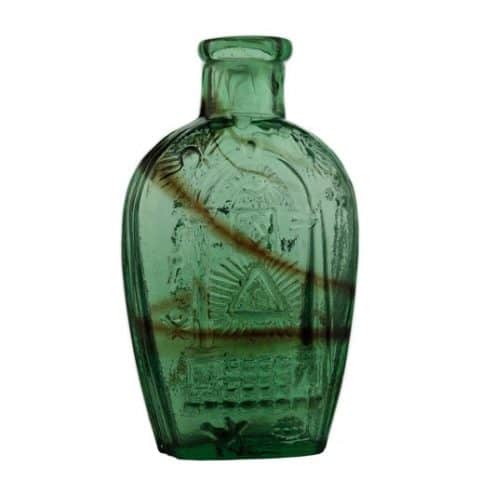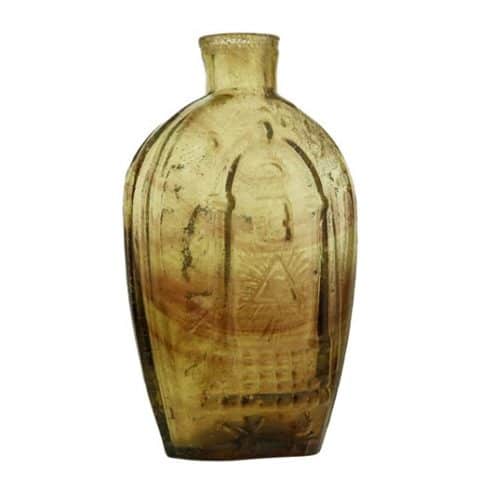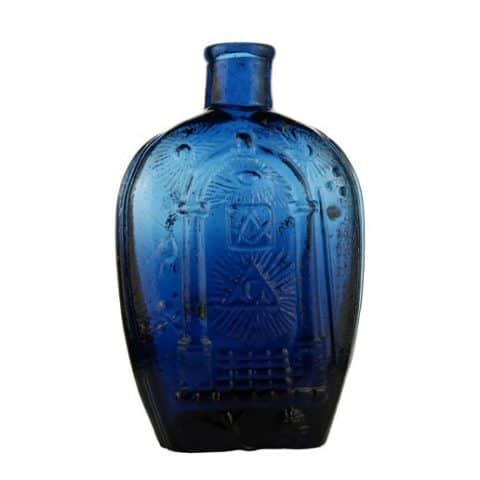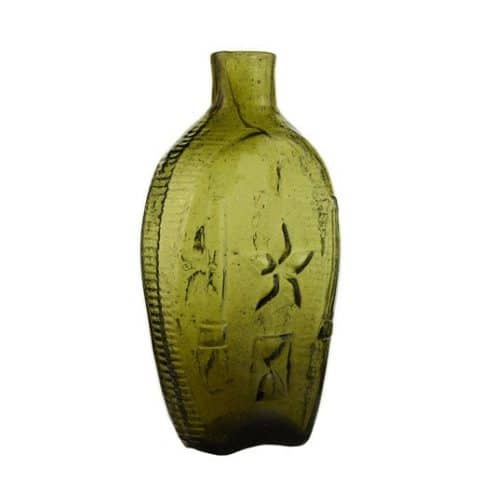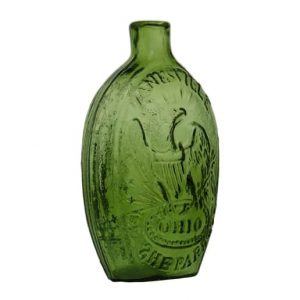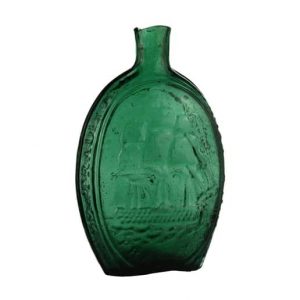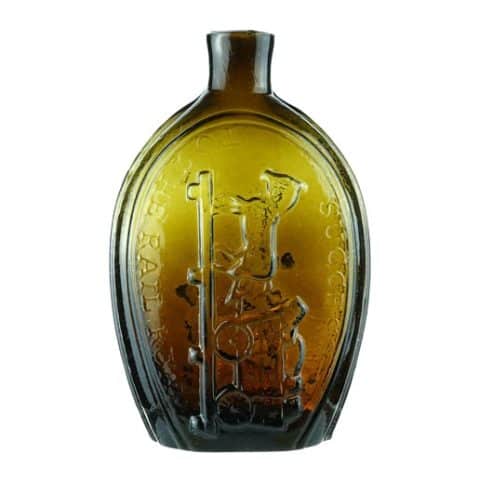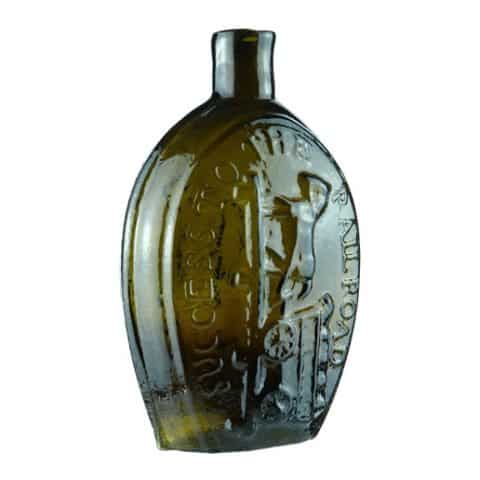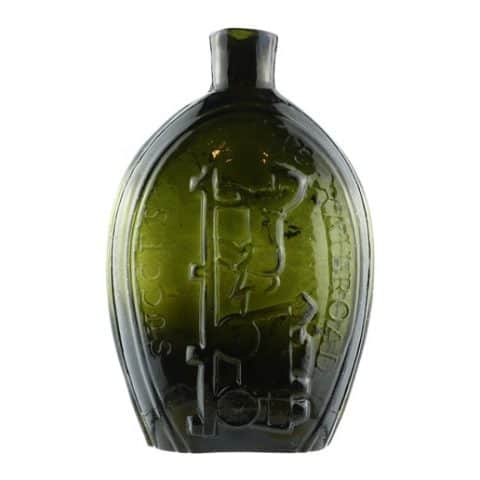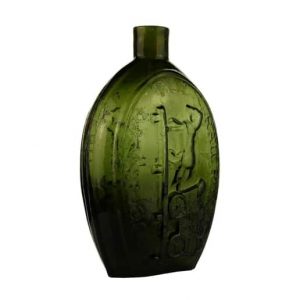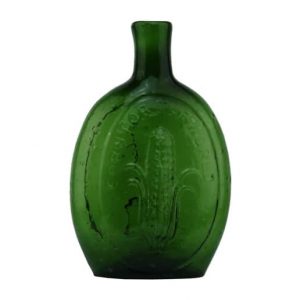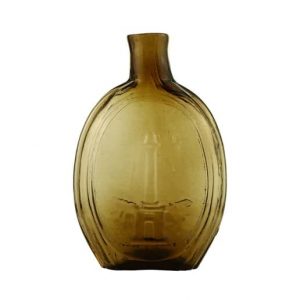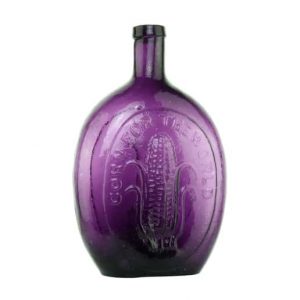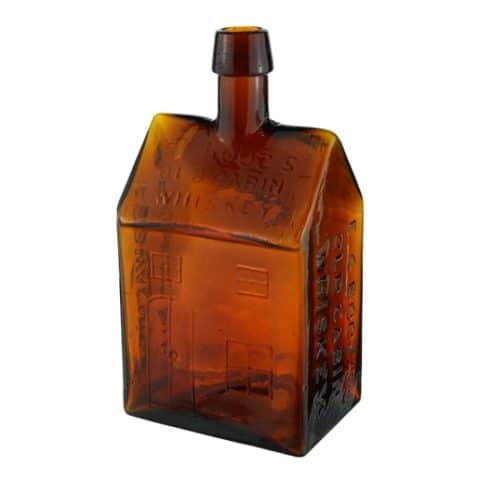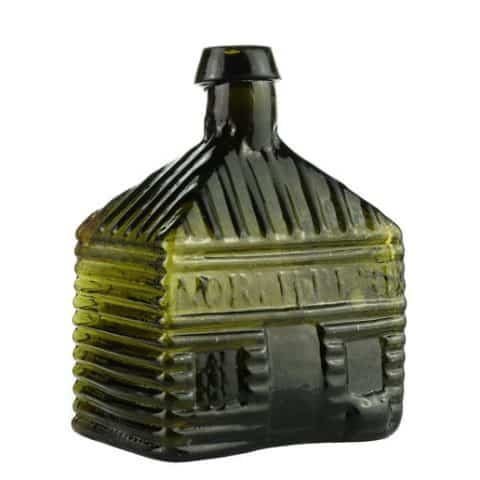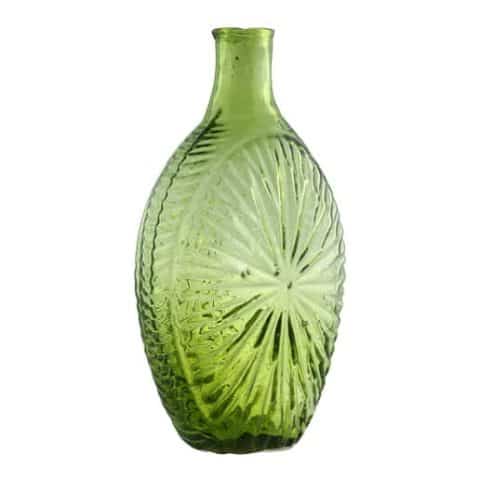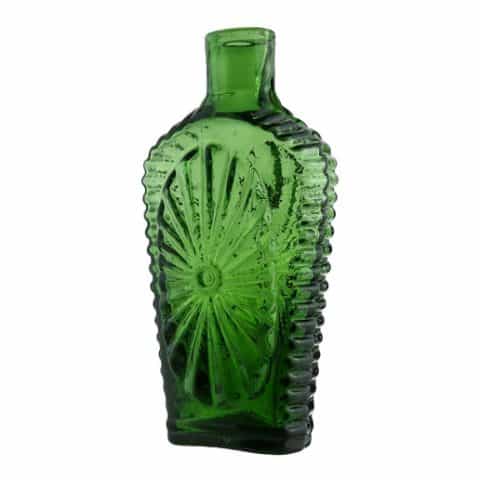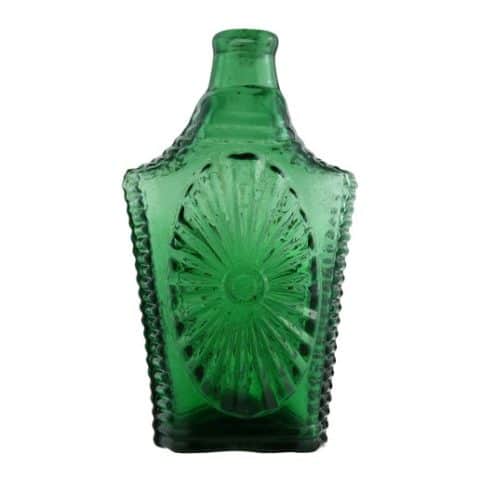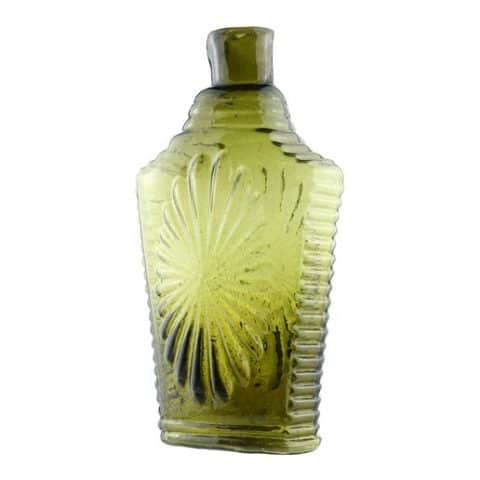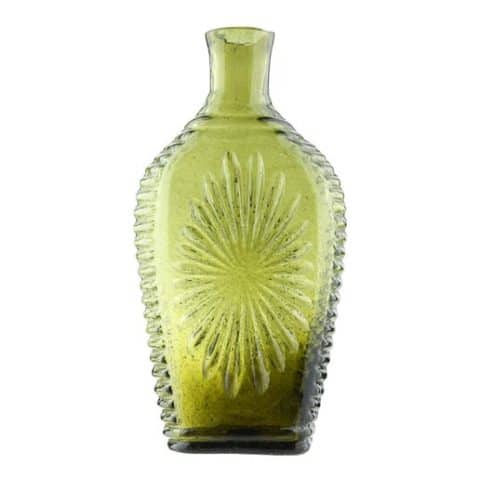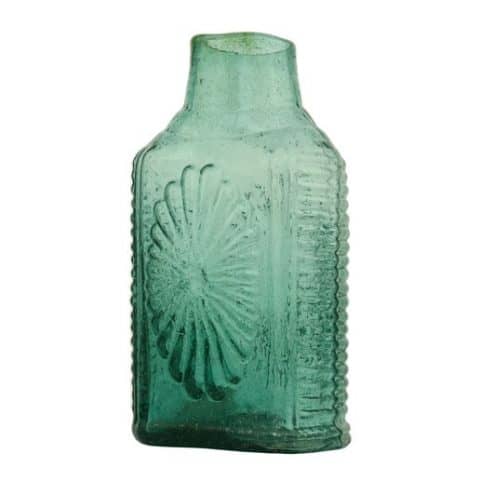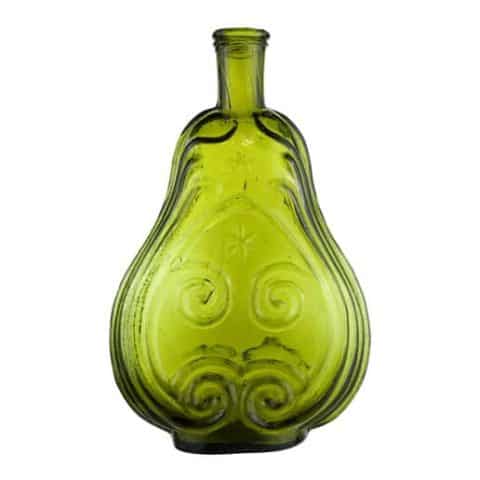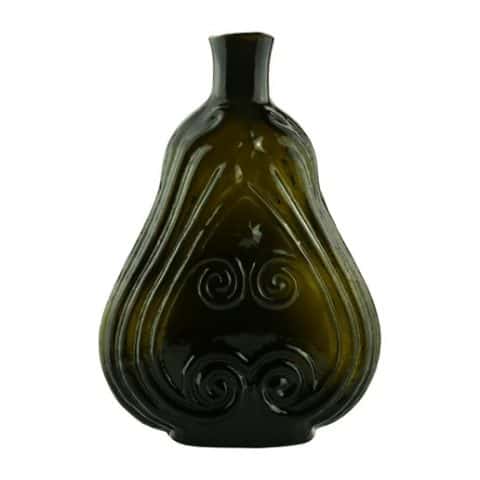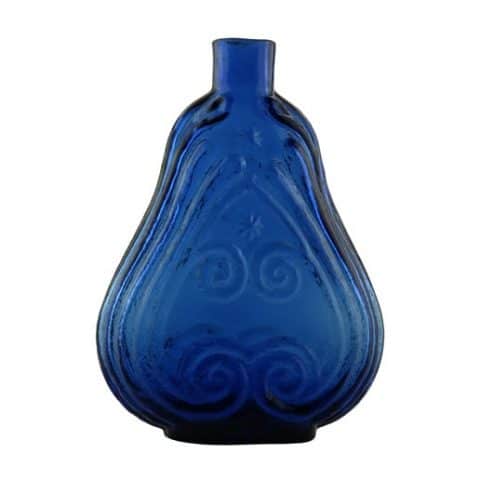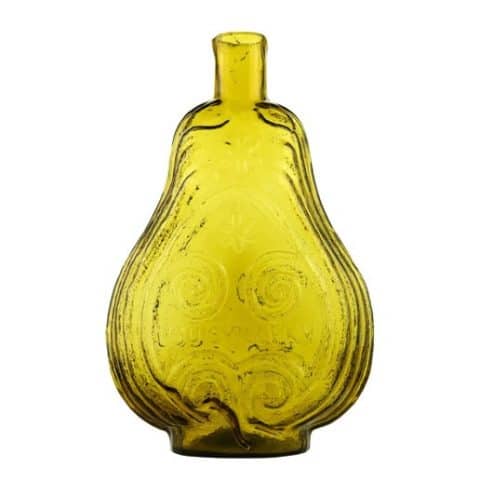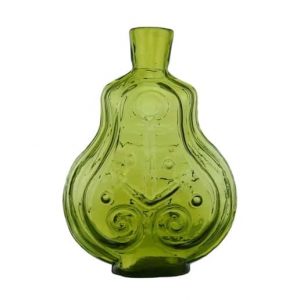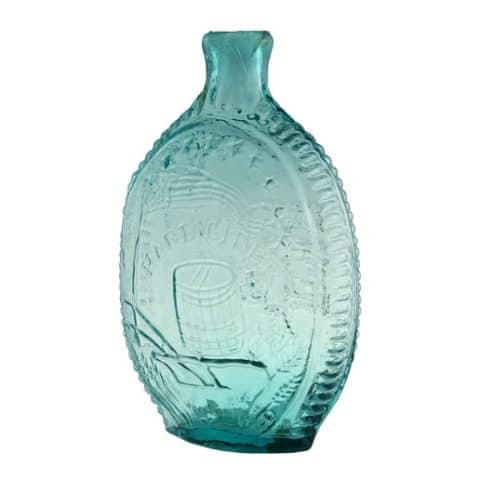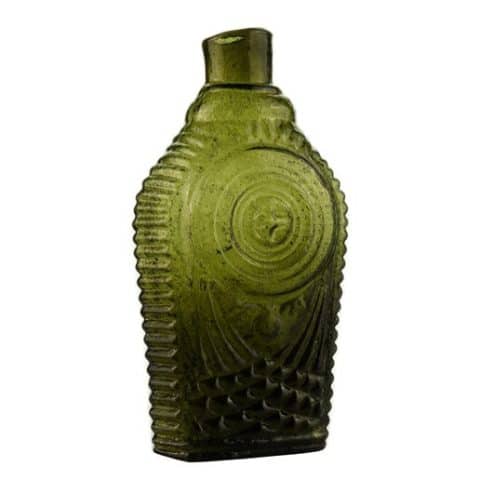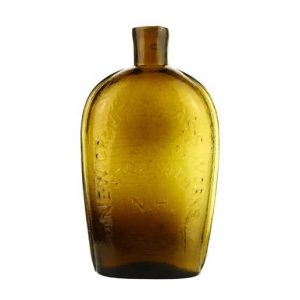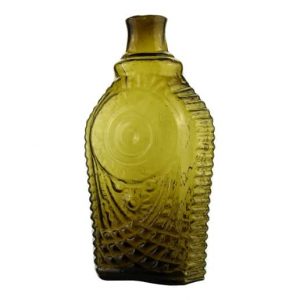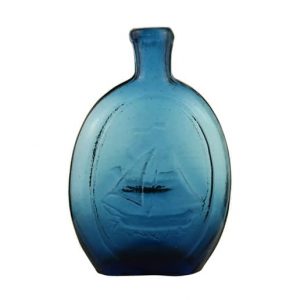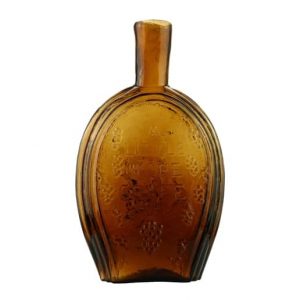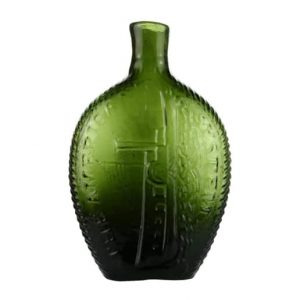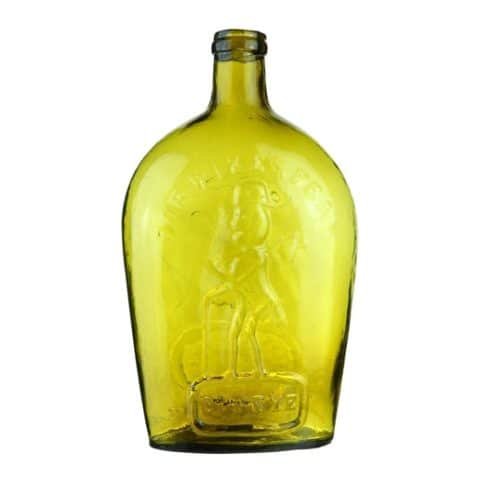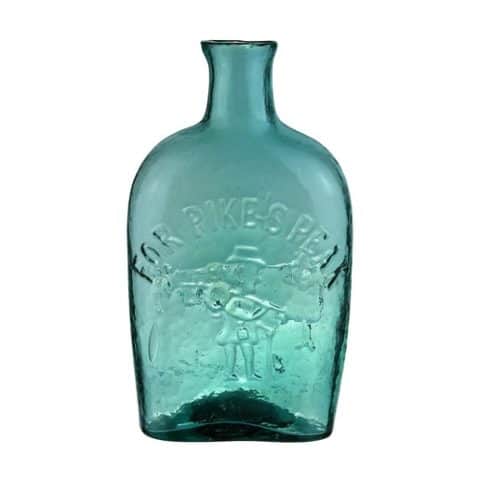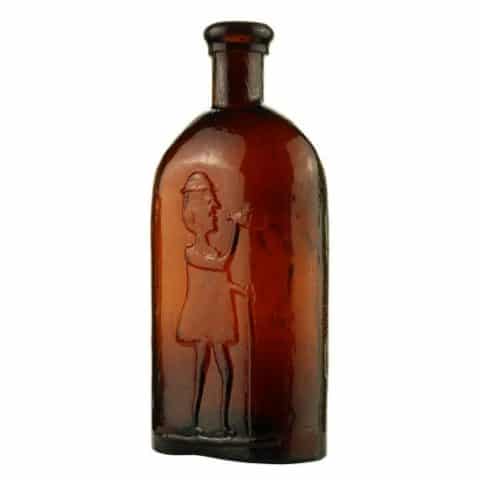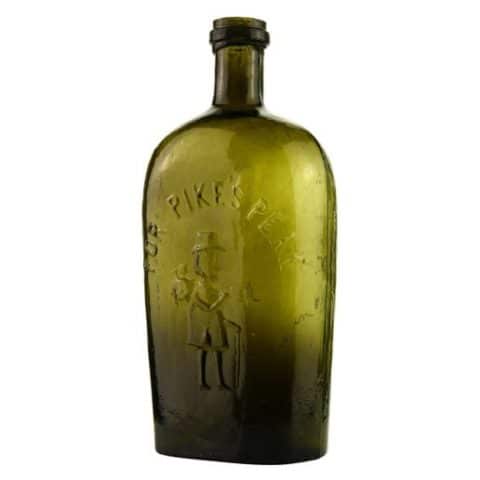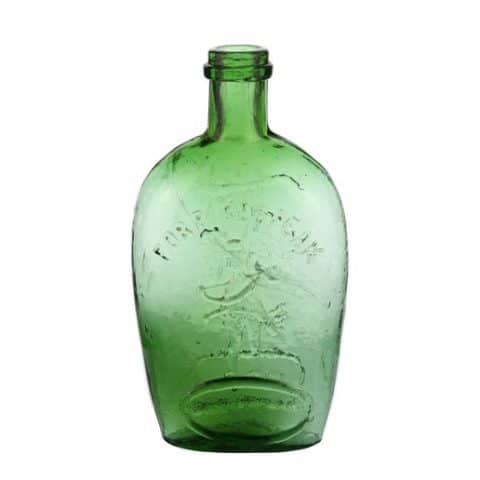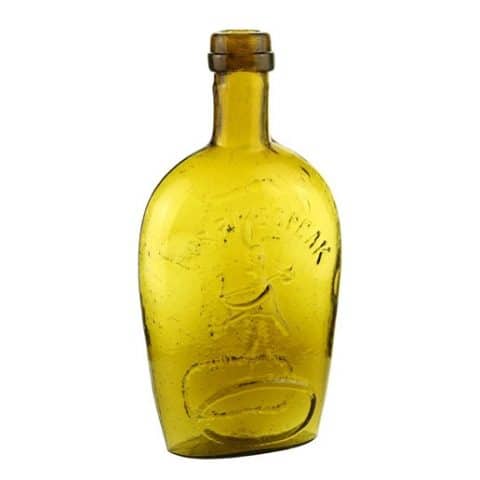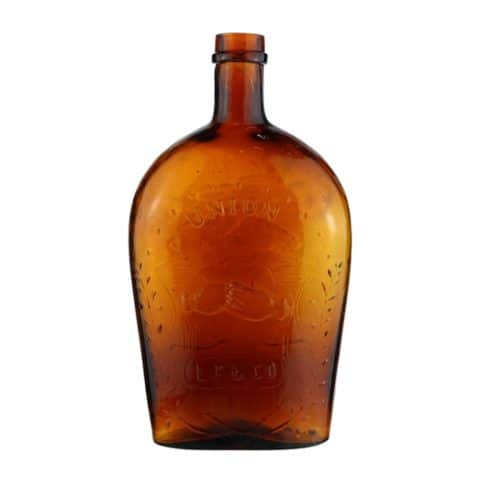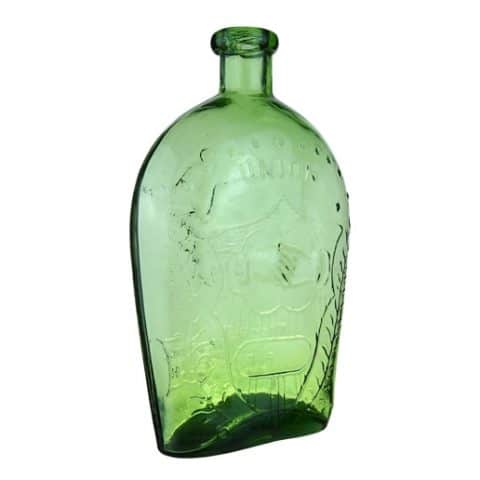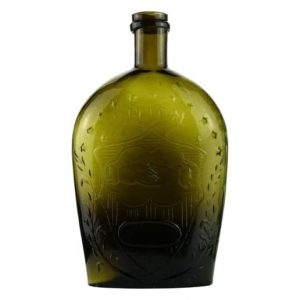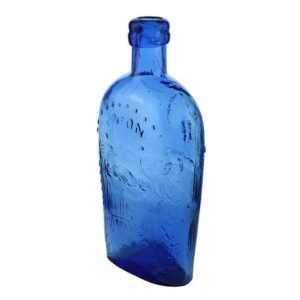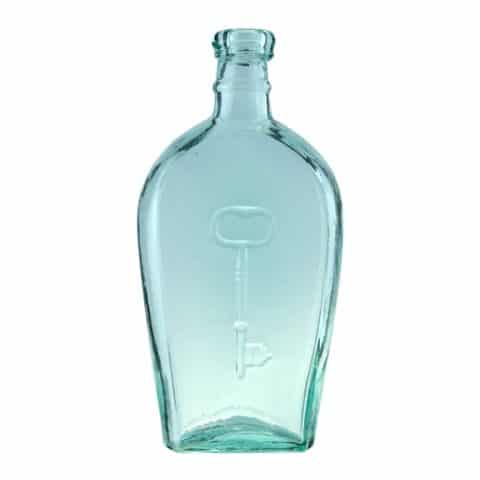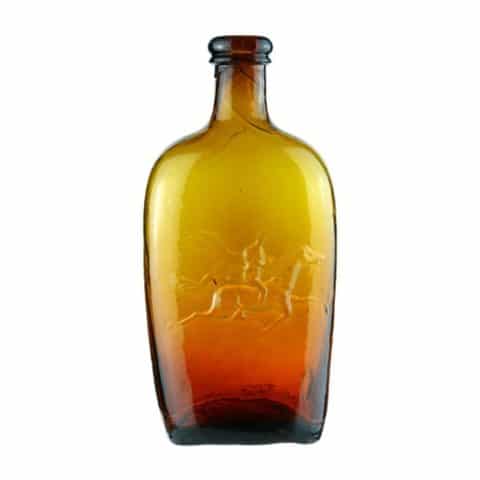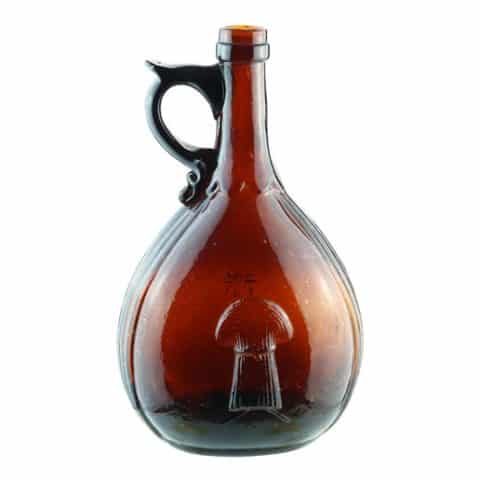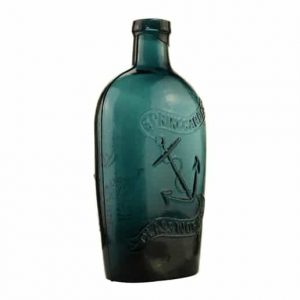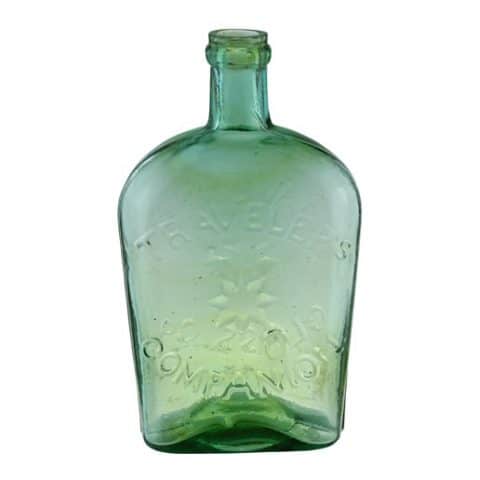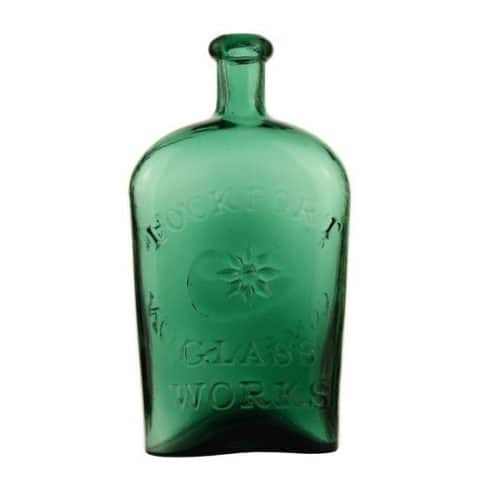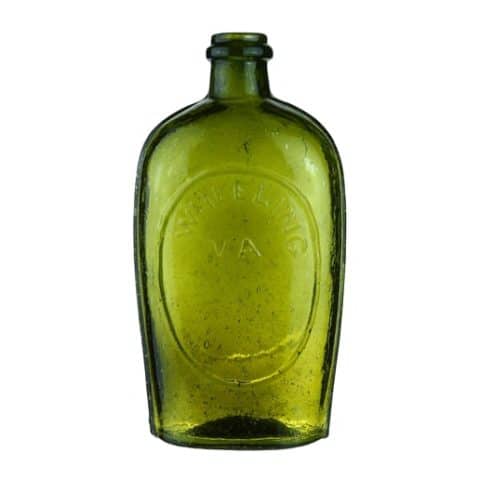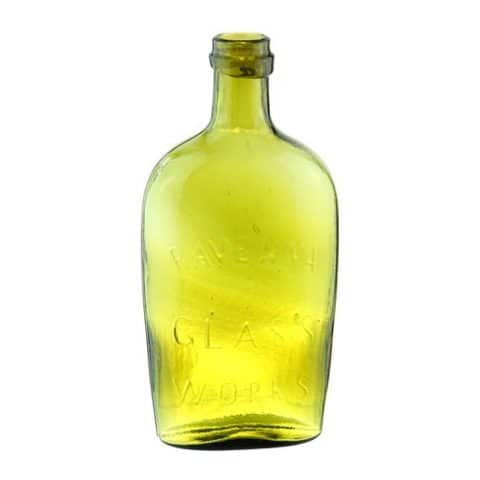GXII-39 “Union / W. Frank & Sons Pitts.” and Clasped Hands – Cannon Flask
GXII – 39
“Union / W. Frank & Sons Pitts.” And Clasped Hands – Mounted Cannon
Historical Flask
William Frank & Sons
Frankstown Glass Works, Pittsburgh, Pennsylvania
Sapphire Blue Pint
Provenance: Anonymous
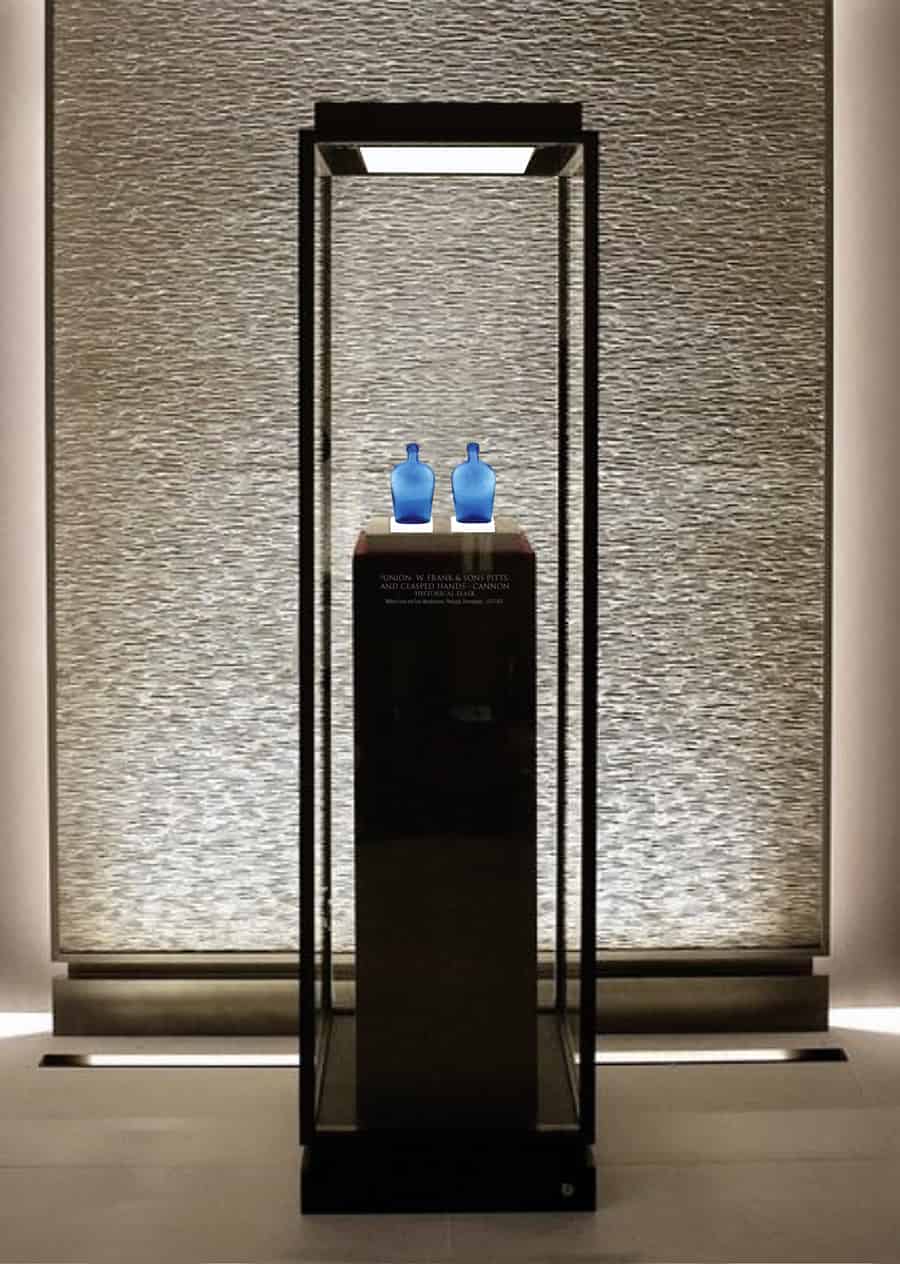
This popular Civil War-era flask depicts images of clasped hands and a cannon. The pint GXII-39 flask was blown at the Wm. Frank & Sons Glass Works and dates to around 1866. It varies from the typical Union – Clasped Hands flasks by having the embossed cannon which makes it a popular specimen among flask and history buff collectors.

On what is considered the obverse side of the flask is a narrow tall shield with shallow curves in the ogival top leading to a high point with high narrow rounded shield corners. There are short horizontal ribs at the top corners of the shield. The clasped hands, within a frame, have cuffs and vestige of sleeves. The lower field has nine vertical bars, in various lengths, in groups of three, leading to a large oval frame at the bottom of the shield with embossed, “Wm FRANK & SONS PITTS.” in a serif typestyle following the inside shape of the frame in convex and concave arcs. The “m” of “Wm” is lowercase, raised, and has two dots beneath. There is a laurel branch on each side of the shield converging to the center bottom of the flask. There are 27 laurel leaves on the left branch and 23 on the right. Above the shield are 14 stars of which twelve are in an arc. The embossed copy “UNION” is in a serifed typestyle and is in a convex curve below the stars and above the shield.
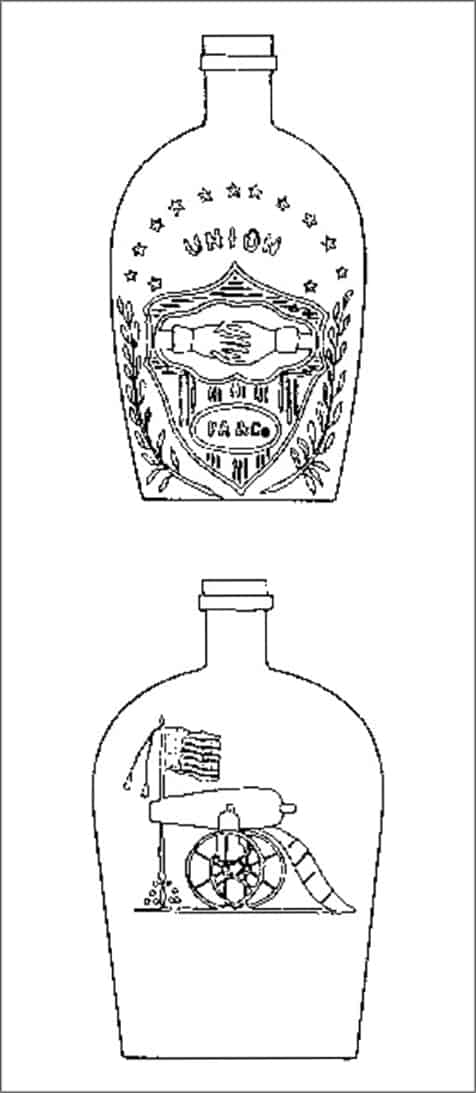
The reverse side of the flask shows a cannon facing left with five spokes in one wheel and four in the other. There are three diagonal bars to ribs framing the edge of the cannon “tongue.” The outside wheel is not touching the horizontal ground bar. Six cannonballs are stacked in a 3, 2, 1 pyramid in front of the wheels. There is a flagpole behind the cannon and intersecting with the cannonballs. The flag has twelve tiny stars and six stripes.
The pint has a tall cylindrical neck with an applied square ring on a thickened plain lip. There is a Type 1 base.
The GXII-39 flask can be found in shades of aquamarine, shaded ambers, light yellow-green, and deep citron. This deep sapphire blue example could be the finest known example among the four or five extant as it is in perfect condition and has a deeper blue color than the others. Also, several of the other examples are in imperfect condition and another perfect example lacks the bold mold impression of this example.
We have pictured above a GXII-39a variant. This mold variant has 13 stars with 11 in the arch, 26 leaves on the right laurel branch, and is embossed “W. Frank” as opposed to “Wm. Frank”.
The provenance of this flask is interesting. It was originally in the collection of George Arthur from New York City who was a pioneer in the hobby and collected in the late 1920s and 1930s. The collection was inherited by his son who sold the entire collection in 1970.
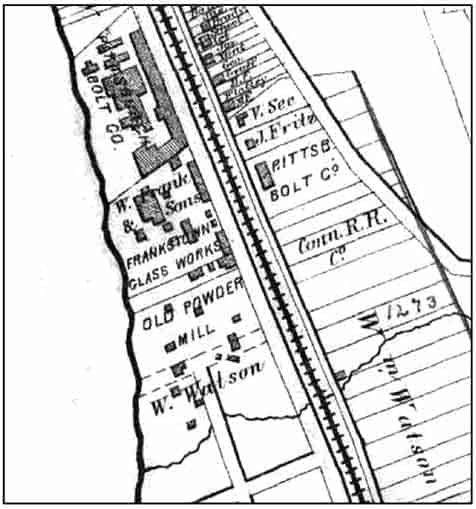
William Frank & Sons, Pittsburgh, Pennsylvania, and their Frankstown Glass Works produced our subject flask. The 1872 map above shows the location of the glass factory beside the Monongahela River. Their warehouse was located at 92 First Avenue and their factory was on Frankstown Road, beyond the eastern limits of the city. Frankstown Glass Works manufactured window glass and many bottles.
William Frank moved into the glass business with Ephraim Wormser after he married Pauline Wormser, Ephraim’s sister. Eventually, Frank traded his share of an oil business for Wormser’s share of the glasshouse then brought his sons into the business. In a short decade of operation, the Frank family introduced a rich variety of manufacturer’s marks into the market.
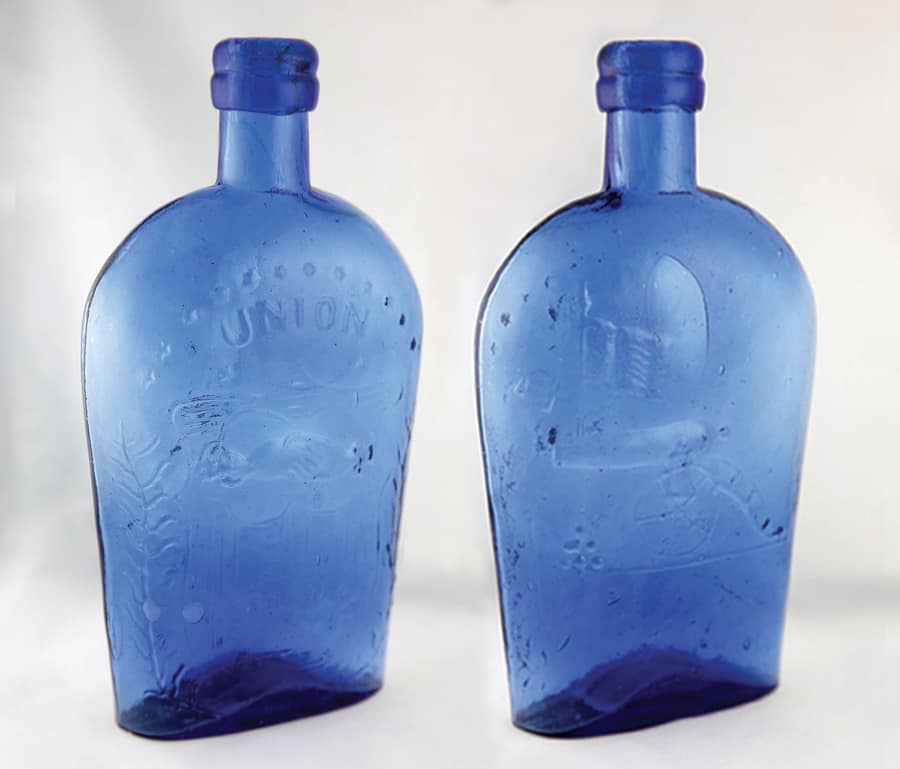
Primary Image: The GXII-39 “Union” Clasped Hands “Wm. Frank & Son Pitts.” – Mounted Cannon flask imaged on location by the FOHBC Virtual Museum midwest studio led by Alan DeMaison.
Support Images: Auction Lot 45: “Union” And Clasped Hands – Cannon Historical Flask, William Frank and Sons Manufacturers, Pittsburgh, Pennsylvania, 1873-1876. Medium sapphire blue, applied mouth with ring – smooth base, pint; (light exterior high point wear). GXII-39. A comparatively scarce flask in a wonderful, rare shade of blue. Fine condition. Dr. Gary and Arlette Johnson collection. – Norman Heckler Jr. & Sr., Norman C. Heckler & Company
Support Image: Auction Lot 130: “UNION” / CLASPED HANDS / “WM. FRANK & SON / PITTS.” – MOUNTED CANNON, (GXII-39), William Frank & Son Glass Works, Pittsburgh, Pennsylvania, ca. 1860-1870, reddish amber pint, smooth base, applied ring mouth. A tiny pinhead in size flake is off the base at the edge, otherwise perfect. Nice reddish color, good glass whittle, scarce Wm. Frank mould. – Jim Hagenbuch, Glass Works Auctions
Support Images: Auction Lot 145: “Union / W. Frank & Sons Pitts.” And Clasped Hands – Cannon Historical Flask, William Frank and Sons Manufacturers, Pittsburgh, Pennsylvania, 1870-1876. Rich aquamarine, applied mouth with ring – smooth base, pint; (two 1/8 inch flakes on mouth inner and outer edges). GXII-39 variant This mold variant has 13 stars with 11 in the arch, 26 leaves on right laurel branch and is embossed “W. Frank” as opposed to “Wm. Frank”. – Norman Heckler Jr. & Sr., Norman C. Heckler & Company, Auction #135
Support: Reference to Prized Midwestern Flasks, Mark Vuono, FOHBC 2018 Cleveland National Antique Bottle Show Souvenir Program
Support: Reference to American Bottles and Flasks and Their Ancestry by Helen McKearin and Kenneth M. Wilson, Crown Publishers Inc., New York, 1978.
Support: Reference to William Frank & Sons, Pittsburgh, Pennsylvania by Bill Lockhart, Beau Schriever, Bill Lindsey, Carol Serr, and Bob Brown with contributions by Jay Hawkins
Join the FOHBC: The Virtual Museum is a project of the Federation of Historical Bottle Collectors (FOHBC). To become a member.


